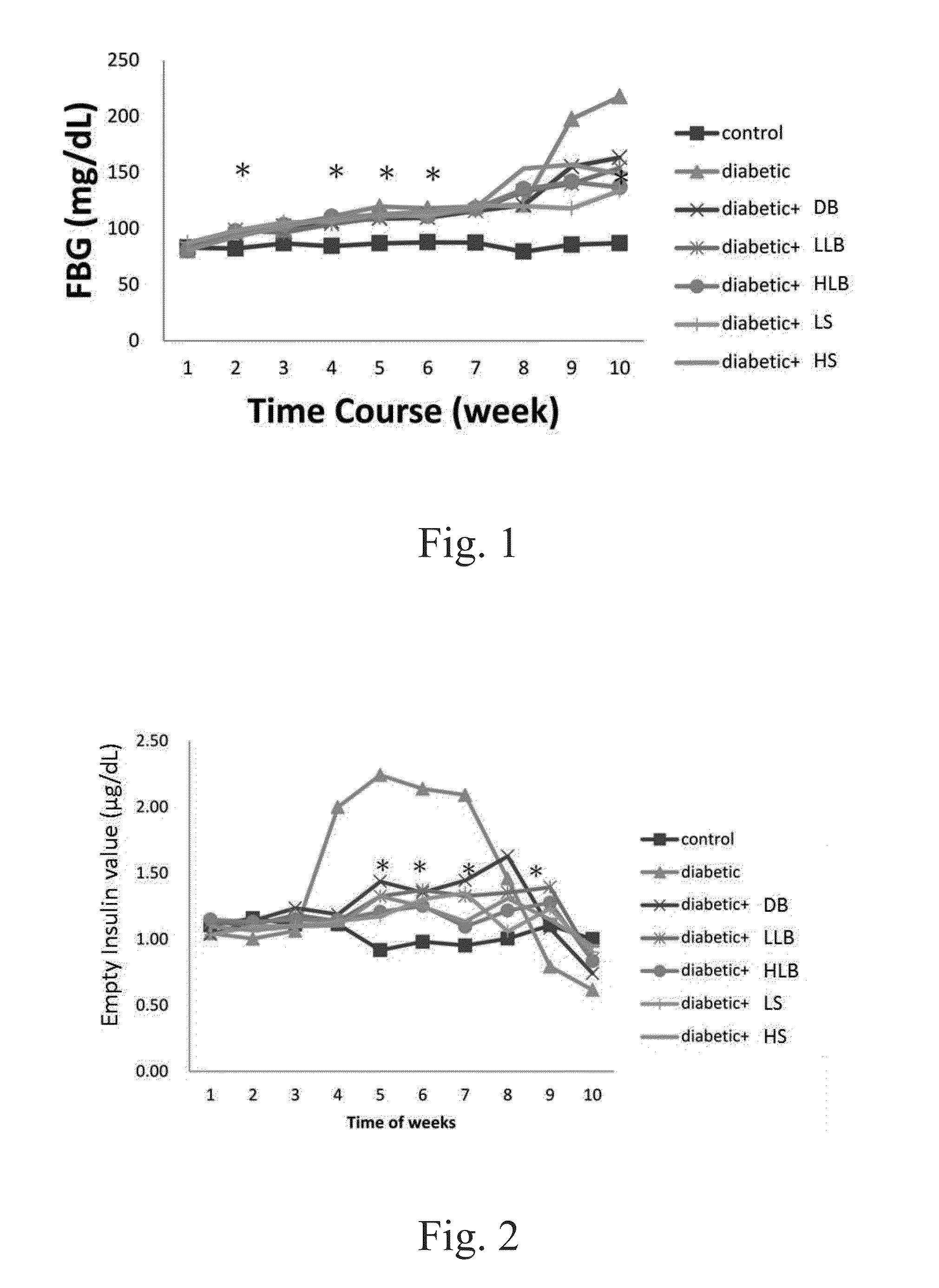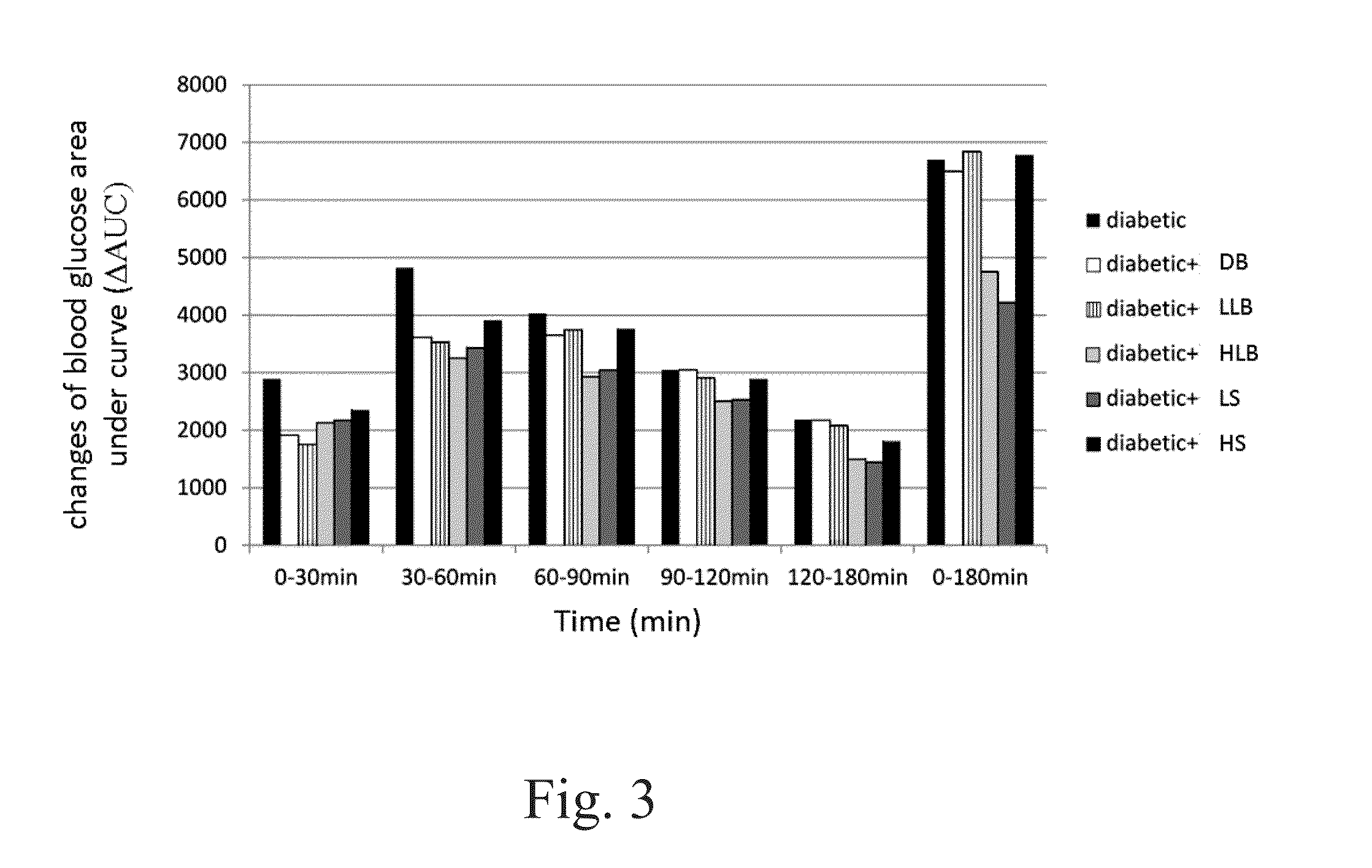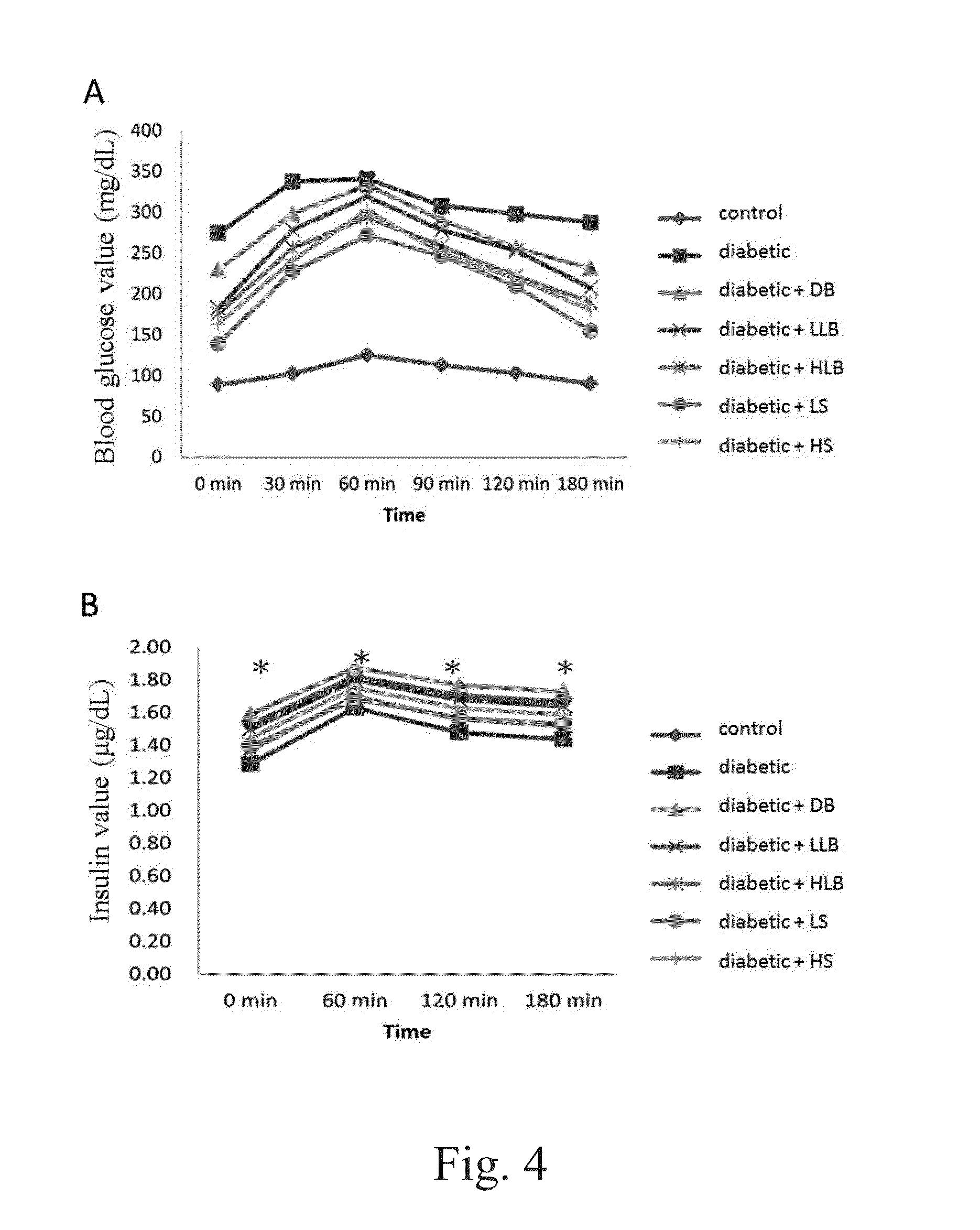Composition and method of lactobacillus reuteri gmnl-89 in treating type 2 diabetes
a technology of lactobacillus reuteri and gmnl-89, which is applied in the field of lactobacillus isolates to achieve the effects of increasing the level of high density lipoprotein (hdl), high total cholesterol, and high glycosylated hemoglobin ratio
- Summary
- Abstract
- Description
- Claims
- Application Information
AI Technical Summary
Benefits of technology
Problems solved by technology
Method used
Image
Examples
example 1
Confirmation of Creation of the Animal Disease Model
[0121]The fasting blood glucose levels between the experimental groups and the type 2 diabetic group showed no significant differences for the first 7 weeks. However, the blood glucose levels in diabetic, high / low live bacteria and high supernatant groups started to rise at the eighth week, but the rising trend is more moderate in dead bacteria, high / low live bacteria and high supernatant groups. The supernatant groups showed the best protection against STZ+Nicotinamide induced type 2 diabetes in the animal model during the first eight weeks. Likewise, similar results were also observed after 10 weeks of the experiment. Alternatively, the fasting insulin level in the diabetic group began to rise at the fourth week demonstrating a compensatory phenomenon, indicating the rats in the diabetic group already had problems of insulin production at the fourth week. In contrary, the fasting insulin level in all groups fed with different lac...
example 2
[0122]During the course of the study, daily intake of diet was recorded and averaged. Because the differences in daily intake of the rats may affect their body weights and consequently have an effect on the results, the intake amount in each group was recorded and no statistically significant difference was found when compared with the amount in the diabetic group. In summary, intake calories of each group are similar and have no effects on the study results.
TABLE 2Average intake amount in rats of each group during the course of the study (g)GroupDiabetes +Diabetes +Diabetes +lowhighDiabetes +Diabetes +IntakeControldeadlivelivelowhighamountgroupDiabetesbacteriabacteriabacteriasupernatantsupernatantIntake27.2 ± 4.523 ± 4.422 ± 5.322.2 ± 523.5 ± 522.4 ± 4.621.8 ± 4.9amount (g)
example 3
Body Weight and the Weights of Liver and Kidney
[0123]In addition to recording the intake amount of daily diet, weekly body weight change was also documented. From Table 3, no statistically significant differences of body weights were found between the rats of various groups and the diabetic group. At week 10, these rats were sacrificed and their livers and kidneys were collected and weighed. Likewise, according to the results (Table 4), no statistically significant differences of the organ weights were observed in different groups of rats when compared with the rats in the diabetic group.
TABLE 3Body weight changes in rats of each group during the course of the study (g)GroupDiabetes +Diabetes +Diabetes +lowhighDiabetes +Diabetes +ControldeadlivelivelowhighWeekgroupDiabetesbacteriabacteriabacteriasupernatantsupernatantWeek 1406 ± 34425 ± 25400 ± 13403 ± 10400 ± 26429 ± 29426 ± 13Week 2424 ± 29439 ± 40410 ± 36415 ± 35420 ± 34436 ± 35411 ± 28Week 3432 ± 33454 ± 40413 ± 42417 ± 40440 ± ...
PUM
 Login to View More
Login to View More Abstract
Description
Claims
Application Information
 Login to View More
Login to View More - R&D
- Intellectual Property
- Life Sciences
- Materials
- Tech Scout
- Unparalleled Data Quality
- Higher Quality Content
- 60% Fewer Hallucinations
Browse by: Latest US Patents, China's latest patents, Technical Efficacy Thesaurus, Application Domain, Technology Topic, Popular Technical Reports.
© 2025 PatSnap. All rights reserved.Legal|Privacy policy|Modern Slavery Act Transparency Statement|Sitemap|About US| Contact US: help@patsnap.com



